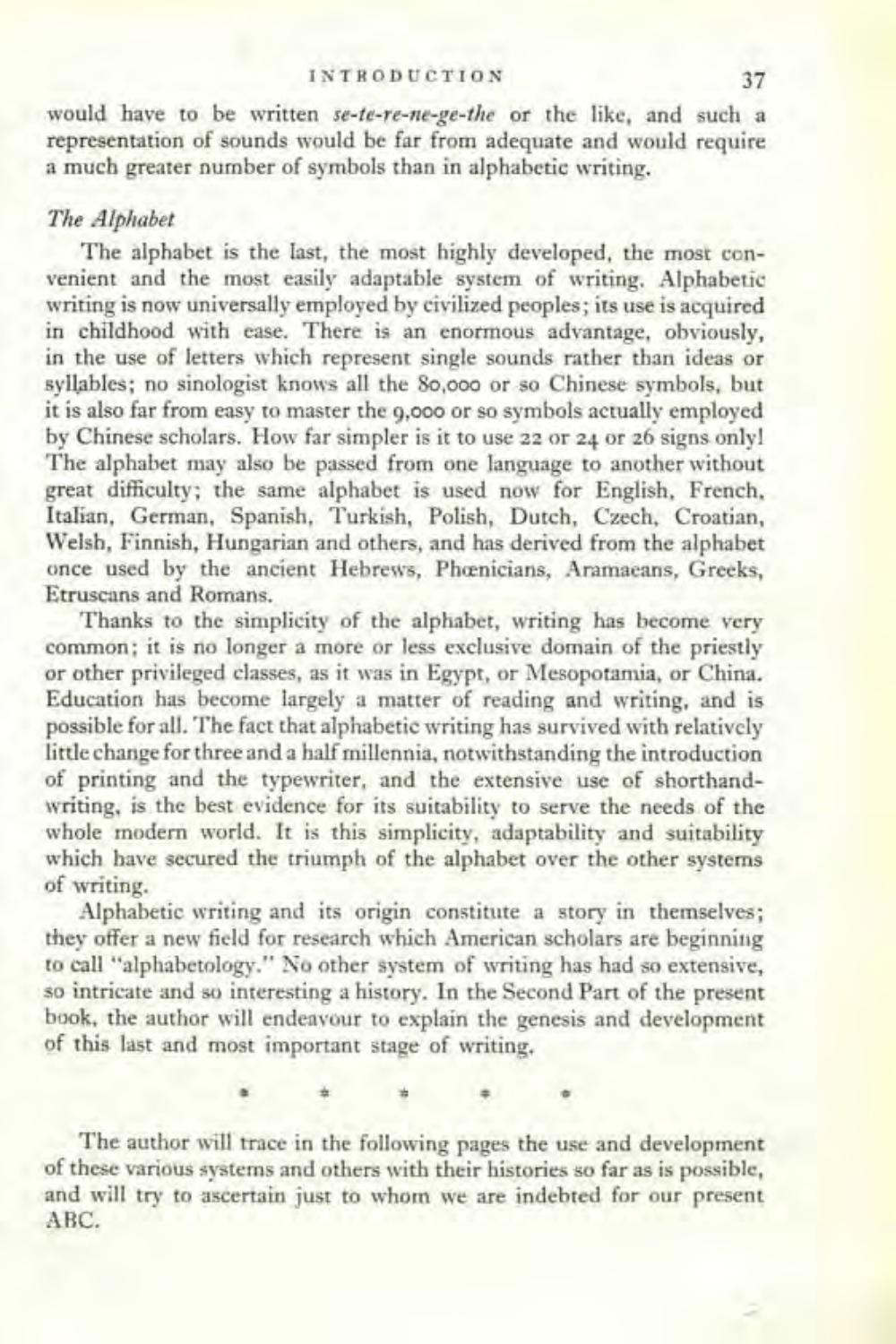________________
INTRODUCTION
37
would have to be written se-te-re-ne-ge-the or the like, and such a representation of sounds would be far from adequate and would require a much greater number of symbols than in alphabetic writing.
The Alphabet
The alphabet is the last, the most highly developed, the most convenient and the most easily adaptable system of writing. Alphabetic writing is now universally employed by civilized peoples; its use is acquired in childhood with ease. There is an enormous advantage, obviously, in the use of letters which represent single sounds rather than ideas or syllables; no sinologist knows all the 80,000 or so Chinese symbols, but it is also far from easy to master the 9,000 or so symbols actually employed by Chinese scholars. How far simpler is it to use 22 or 24 or 26 signs only! The alphabet may also be passed from one language to another without great difficulty; the same alphabet is used now for English, French, Italian, German, Spanish, Turkish, Polish, Dutch, Czech, Croatian, Welsh, Finnish, Hungarian and others, and has derived from the alphabet once used by the ancient Hebrews, Phoenicians, Aramaeans, Greeks, Etruscans and Romans.
Thanks to the simplicity of the alphabet, writing has become very common; it is no longer a more or less exclusive domain of the priestly or other privileged classes, as it was in Egypt, or Mesopotamia, or China. Education has become largely a matter of reading and writing, and is possible for all. The fact that alphabetic writing has survived with relatively little change for three and a half millennia, notwithstanding the introduction of printing and the typewriter, and the extensive use of shorthandwriting, is the best evidence for its suitability to serve the needs of the whole modern world. It is this simplicity, adaptability and suitability which have secured the triumph of the alphabet over the other systems of writing.
Alphabetic writing and its origin constitute a story in themselves; they offer a new field for research which American scholars are beginning to call "alphabetology." No other system of writing has had so extensive, so intricate and so interesting a history. In the Second Part of the present book, the author will endeavour to explain the genesis and development of this last and most important stage of writing.
The author will trace in the following pages the use and development of these various systems and others with their histories so far as is possible, and will try to ascertain just to whom we are indebted for our present ABC.




